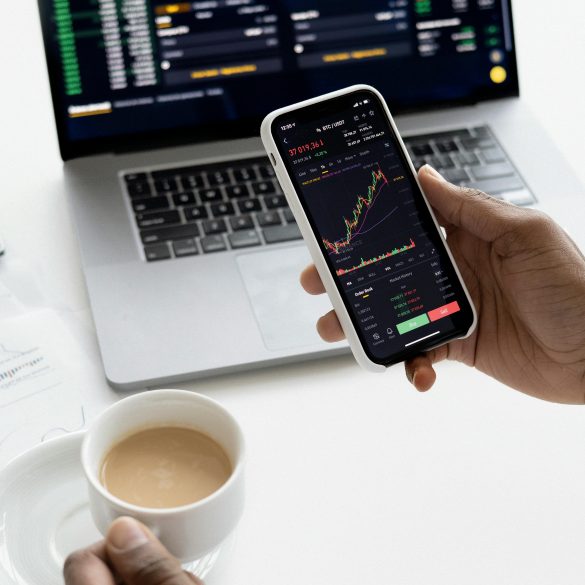Ecuador Market Playbook: Building Budgeting Habits for Personal Finance
Listen, I’ve spent more than a decade digging into the real reasons why budgeting works (or sometimes, falls apart)—especially in markets like Ecuador, where economic swings, local customs, and family priorities collide in ways that most “global” finance blogs skip over. Back in 2016, I sat in a household in Quito, watching a mother of three try to balance grocery lists with a fluctuating dollar-to-Sucre exchange rate. What did I learn? Budgeting here isn’t just about spreadsheets—it’s woven into daily choices, neighborhood shops, and community wisdom. Funny thing is, these observations hold up even as inflation shifts or rainy season hits. All those statistics you find online? They barely scratch the surface. So today—right now—I want to share not just numbers, but strategies layered with real Ecuadorian texture, including lessons from my own budgeting mistakes (and wins) with locals, startups, and average consumers.
What really strikes me is how small, local actions can totally reshape your financial future—especially when you adapt global budgeting advice to fit Ecuador’s market stories, seasonal spending patterns, and daily negotiation tactics.1
Local Market Context & Everyday Economics
Let me step back for a moment. Ecuador’s financial culture is pretty unique—even compared to neighbors like Colombia or Peru. The official currency is the U.S. dollar, adopted in 2000 to fight hyperinflation2. Sounds simple, right? Actually, using the dollar brings both stability and new constraints: wage growth lags, prices fluctuate with oil exports, and imports swing with global trends. If you’re budgeting here, real-world spending often means improvising (and haggling), which is why “fixed cost” theories sometimes miss the mark. From street vendors in Cuenca to tech freelancers in Guayaquil, local finance habits reflect market realities: variable income, seasonal purchases (hello, back-to-school sales!), and community support networks.
Ecuador’s official currency switch to the U.S. dollar in 2000 cut inflation from 96% to under 10%, but also made local budgeting highly sensitive to global commodity prices and even U.S. Federal Reserve decisions.3
Essential Budgeting Principles for Ecuador
I’ll be completely honest: building a budget that lasts in Ecuador means blending classic finance rules with market-driven flexibility. There are three non-negotiables I found working with local families and young professionals: clarity, adaptability, and community awareness. Let me clarify that—clarity is about really knowing your monthly income and the hidden seasonal bumps (like “bono de Navidad” or a sudden price hike on staples). Adaptability? That’s using variable expense envelopes (actual envelopes, not apps!), shifting priorities as the local market rises and falls. Community awareness—as odd as it sounds—is about leveraging family or social circles to avoid risky debt and even get informal discounts. Actually, let me backtrack and add: budgeting here is deeply social.
- Track expenses with both receipts and informal logs (like notebooks or WhatsApp).
- Set flexible spending goals that adjust with market/current events.
- Always include “emergency buffer” for medical or seasonal costs.
- Engage your network for tips, bulk buying, or cost-sharing tactics.
“Budgeting in Ecuador is less about strict limits and more about responsive adaptation—it’s like learning to dance with the market, not fight it.”
Create a weekly “spending snapshot” (even if rough) to spot trends early—don’t wait for monthly review; most Ecuadorian families adjust plans every 7-10 days.4
Habit-Building Tactics & Cultural Adaptations
Here’s where I get passionate. Building actual habits—not just following budgeting “rules”—requires a personal reset, especially in Ecuador. I used to think I could just copy what worked in the U.S., but, on second thought, local realities change everything. For example, market days dictate food prices (sometimes fresh produce is 30% cheaper on Wednesday!), and family events like “fiestas de barrio” mean budgeting for surprise contributions. Last month, a Quito-based client realized they spent more on snacks for neighborhood soccer matches than their monthly internet bill. These cultural rhythms shape habits—so the first move is tracking seasonal spikes, not just totals.
Build a recurring reminder—weekly or biweekly—tied to market cycles, not arbitrary app notifications.5 Use simple triggers: “market day,” “school fees,” “rainy season.” It’s more effective than waiting for invoice emails.
Cultural Budgeting Adaptations
- Embrace cash budgeting—ATMs and digital payments exist, but cash is still king in many markets.
- Use “minga” events (community work) to reduce expenses—sharing chores often means sharing costs.
- Find local discount cycles: supermarkets and “tiendas” rarely have predictable pricing outside central cities.6
- Account for extended family contributions—they’re common and unavoidable, especially in rural settings.
“Honestly, in Ecuador, you learn quickly that budgeting is a team sport. Grandparents, neighbors, even coworkers pitch in, and that keeps the safety net strong.”
On second thought, what strikes me most is how habit-building in Ecuador stretches beyond the individual. People often learn to budget from their elders—a tradition as practical as it is emotional. I remember a teen in Otavalo saving festival earnings, coached by her grandmother with cryptic advice (“half for fun, half for rainy days”). It worked. If you’re starting out, invite family into your budgeting. Transparency leads to accountability—something Western finance books often forget.
Ecuador has a national unemployment insurance program (“Seguro de Desempleo”)—but informal support networks provide more day-to-day security than government programs for most low- and middle-income families.7
Local Case Study: From Market Vendor to Household CFO
Now, let’s break down a real example. Maria, a market vendor in Ambato, manages both a stall and her family’s monthly budget. She tracks daily expenses on scraps of paper, flags vendor discounts, and adjusts her “food envelope” based on local demand (she noticed bananas shot up in price last April, so she substituted papaya instead). Maria’s approach—hyper-local, flexible, collaborative—keeps her family solvent, even when national inflation rises. That blend of old-school logging, communal learning, and weekly adjustments? It’s the Ecuadorian playbook in action.
| Budget Item | Pre-Market Day | Post-Market Day | Notes |
|---|---|---|---|
| Produce | $40 | $28 | Local market savings |
| School Supplies | $20 | $15 | Seasonal discount |
| Lunch | $50 | $45 | Shared meals |
| Transport | $18 | $18 | No change |
Notice how Maria’s budget flexes around market rhythms—not just fixed costs. Beginners: Adapt your weekly log to local events. Pros: Integrate “floating” envelopes for savings ready to deploy based on seasonal cycles.8
Let that sink in for a moment. The rhythm of Ecuador’s street markets isn’t just background noise—it’s the metronome of everyday budgeting habits, and—if I’m honest—it’s way, way better than rigid spreadsheet rules.

Tools, Frameworks & Practical Case Studies
Let’s dive deeper. What’s the best tool for Ecuador budgeting? Honestly, there’s no “perfect” app—most locals blend paper logs, WhatsApp memos, and family group chats, with the occasional digital spreadsheet. The real trick is consistency, not tech. Having worked with clients in both rural and urban Ecuador, I’ve found that even smartphone-based solutions (like “Agenda Digital Ecuador”) only work if they fit the user’s lifestyle. My early mistake? Pushing international apps without considering spotty connectivity or resistance to online banking.9 Adapt frameworks, don’t impose them.
- Teach the “50/30/20” rule but allow weekly overrides (especially for high-variance income).
- Pilot community banking and savings circles (“caja comunal”) for informal credit and emergency funds.
- Use analog reminders—actual sticky notes, weekly phone alarms, or physical envelope systems.
- Create budget check-ins around cultural milestones (Carnaval, school start, harvest season).
“For everyday Ecuadorian budgeting, practical adaptability trumps imported tools. Start simple—and adjust with the local flow, not against it.”
I go back and forth on this: Is digital budgeting better than old-school logs? Actually, it’s a blend that works. Most successful Ecuadorian households use what’s handy (a worn notebook, a neighbor’s advice, or a mobile app when possible). What stands out is not impressive tech—but habit, routine, and local intuition.
According to the World Bank, about 51% of Ecuador’s adult population has access to formal banking, but informal “cajas comunales” support nearly 40% of micro-entrepreneurs with rapid-cycle loans and group savings.10
Regional Insights & Mistake-Proof Strategies
Speaking of mistakes—here’s one I see constantly: ignoring regional cost variations. Coastal towns have different price spikes (especially during Lent, when fish prices soar), while Andes markets adjust for altitude-grown produce. My own budgeting blunder? Overestimating “fixed” transport costs in Cuenca, only to realize city strikes made buses free for two weeks (should’ve checked local news first).
Always build a “regional adjustment” line in your budget, and update for seasonal, festival, and weather changes. No two provinces behave the same.11
| Region | Seasonal Event | Typical Adjustment | Budget Tip |
|---|---|---|---|
| Quito (Highlands) | Rainy season | Transport +10% | Check transit deals weekly |
| Guayaquil (Coastal) | Pre-Carnaval | Food +15% | Buy bulk early |
| Cuenca (Andes) | Harvest month | Produce -25% | Save for bulk buys |
| Amazonia | Rainy season | Transport +20% | Share rides when possible |
- Identify key local events affecting prices—track them year over year.
- Adjust “fixed” budgets for weather, festivals, and local wage cycles.
- Invite feedback from family or neighbors—two heads are always better.
“What puzzles me sometimes is how fast markets adapt. You need to flex your budgeting muscles—not just your math.”
Save receipts and news clippings—review every quarter for price trends or market surprises. Historical context makes next year’s budget way stronger.12
Long-Term Outlook: Growing Financial Resilience in Ecuador
Where do we go from here? Really, truly important—sustainable budgeting in Ecuador means learning from today’s patterns, staying alert to market shifts, and layering habits built for change. As the economy wobbles, adapting quickly makes the difference between scraping by and building genuine, long-term savings. In my experience, the best budgets aren’t set in stone—they morph with each new season, political blip, or community shift. Back when I first started coaching savings circles, I thought annual goals were enough. Now, I know that weekly and quarterly reviews work better in Ecuadorian context—the rhythm matches real life.
“Ecuador’s market is dynamic—saving is about seizing opportunities. The families who track, adapt, share, and grow together build generational resilience.”
Take five minutes a week to discuss recent market trends, news, or changes with someone in your family or community. Build the budgeting habit together—it’s more powerful than going solo.13
References
Work Cited & Further Reading



